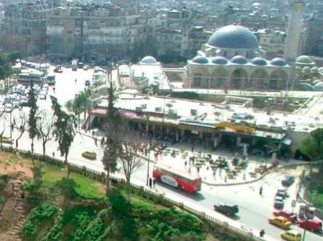
By Selena Anjur-Dietrich
While the Yale University Art Gallery extensively features Islamic art from the seventh to the 20th centuries, the syllabus for my class ‘History of Architecture I: Antiquity to the Baroque’ only includes one lecture on Islamic architecture, squeezed somewhere between Romans and the Romanesque. The reading for that particular lecture promotes puzzling theories: for instance, it somehow links the undifferentiated grid like structure of mosques to an apparent lack of precedent for Islamic architecture. Though my professor later qualified this theory as inferior, the language used shows a kind of inability to envision Islamic art and architecture as its own story, rather than the supposed monolithic, “all of a sudden” entrance.
“Even in a post-Orientalism world, we still deal with this [misrepresentation] all the time,” explained Sharon Smith, who spoke at Sterling Memorial Library’s International Room on October 8th. Smith, head of the Aga Khan Documentation Center at MIT and Harvard, presented on Archnet, an free and fully downloadable online resource on Islamic architecture. The project is funded by the Aga Khan Foundation (the Aga Khan is the leader of the Nizari Ismailis, the second-largest branch of Shia Islam, and also one of the world’s wealthiest royals). Average traffic on the site is currently around 8000 distinct users a day, including students and faculty at diverse points in their careers. One of the features Smith highlighted in her talk was a collection of syllabi from universities around the world that give a more expansive picture of Islamic art, both spatially and temporally.
Archnet currently serves as a repository for data and images of cultural heritage sites, recorded as the buildings are being destroyed. An anonymous donor sent the Documentation Center a large collection of images from Syria just weeks prior to the first air raids. To facilitate this important undertaking, Smith gave the Syrian Students Association access to the “back end” of the website to allow them to document these buildings as needed.
A recent example is the Khusruwiyah Mosque Complex in Aleppo, utterly erased in air raids in August. Yet while Smith emphasized Archnet’s dedication to contextualizing Islamic architecture, the current page for the Khusruwiyah Mosque on Archnet makes no mention of the fact that it no longer exists. Unfortunately, there exists a general lag in updating the site.

When asked about the possibility of protective rather than retroactive preservation of heritage sites, Smith said that the Aga Khan Foundation was limited by its apolitical and even non-denominational nature. Aga Khan Building and Planning Services currently focuses on India and Pakistan and prioritizes projects solely in terms of need, not historic value, particularly in natural disaster conditions. If one of the most powerful and wealthy Islamic leaders in the world cannot protect the mosques of Syria, who can?
Selena Anjur-Dietrich is a sophomore in Ezra Stiles College. She can be contacted at selena.anjur-dietrich@yale.edu.